Coffee means more than a cup on the go in Vietnam. The world’s second greatest coffee exporter has a deep appreciation for its coffee culture that you’ll find coffee shops on each corner, packed from sunrise to sunset. If you wondered is Vietnamese coffee strong, mind you, it’s not uncommon to find a tourist shaking after a single cup!
In this article, we explored every aspect of this potent brew to answer ‘is Vietnamese coffee strong?’. We think you already know the answer.
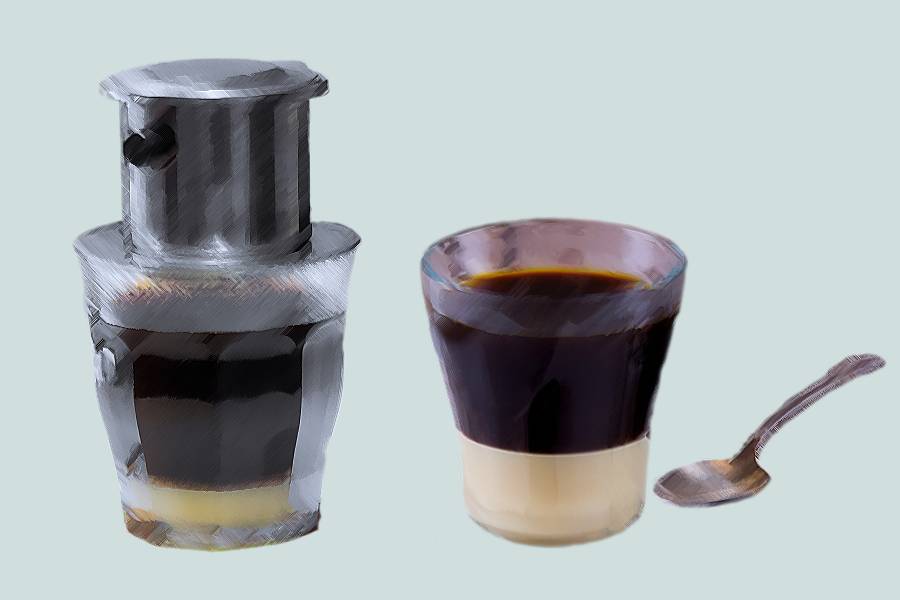
Topics Explored
- Coffee Culture in Vietnam
- Is It Strong?
- How Much Caffeine is in Vietnamese Coffee?
- Why is Vietnamese Coffee So Strong?
- Try these Coffees Instead
- More Questions
Coffee History in Vietnam
The French launched the coffee industry and culture in Vietnam back in 1850 by planting the first Arabica trees. Liberica and Robusta were introduced several years later.
Today Robusta is the most common type of coffee produced in Vietnam and the kind you’d be having at local coffee shops.

Just 40 years ago, Vietnam used to produce 300,000 bags of coffee per year. In 1986 they switched to a market-oriented economy instead of planned with ‘Doi Moi’ economic policy(1).
As a result, the production skyrocketed to 30 million bags per year, making Vietnam one of the world’s largest coffee producers. There’s also a boom of various Vietnamese coffee chains.
Is Vietnamese Coffee Strong?
Vietnamese coffee has a strong taste and rich caffeine content. Over 90% of the coffee produced and used in Vietnam is Robusta which has a harsher and bitter taste, with a peanutty aftertaste. It’s thick, dark, and potent.
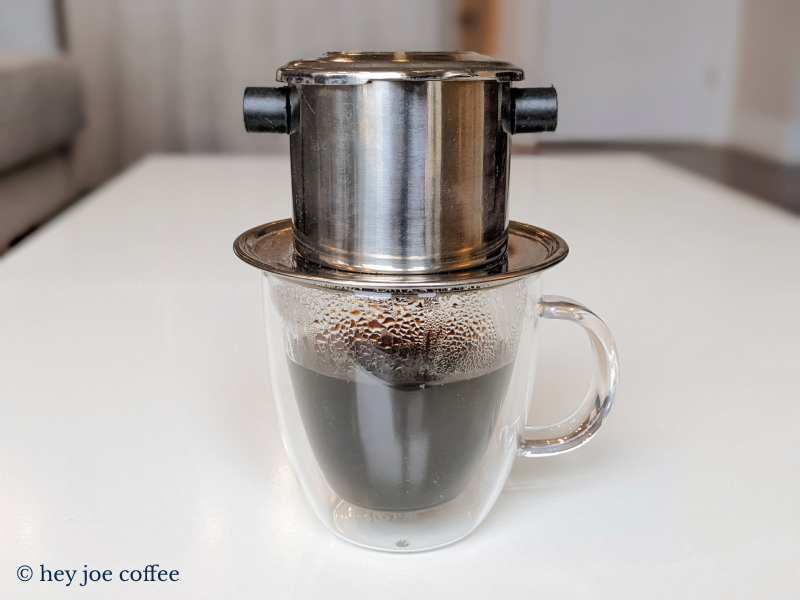
Reported Side Effects
Tourists that tried black Vietnamese coffee describe having jitters, twitching, and shaking after drinking it, as the western palate is not used to the robust taste. It can even induce headaches for those that are more sensitive.
To tone it down, you can have it with sweetened condensed milk.
Why is Vietnamese Coffee So Strong?
The strength of a brewed blonde espresso can vary due to several factors such as coffee grind size, roasting time, volume, and brewing method.
Of course, the main source of caffeine is the bean variety itself, but even the brewing water’s temperature plays a role in the amount of caffeine you’ll extract. Let’s explore some of these factors in further detail.
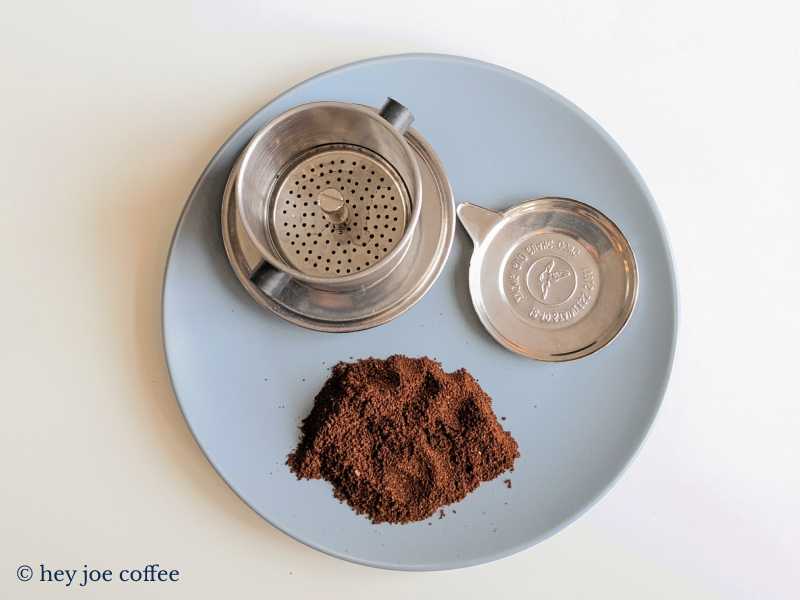
1. Robusta Beans
Vietnamese coffee is made from Robusta beans(2) which are not as sensitive as the Arabica and grow triple the height.
Robusta is lower in natural sugars and lipids. This makes the coffee bolder with a more chocolatey flavor. They also have 2.7% of caffeine, almost double when compared with Arabica, making for the more pungent taste.
2. Brew Method
Vietnamese coffee requires an extended brew time, leading to higher caffeine release. It’s made using phin – the Vietnamese version of a drip coffee without a paper filter.
It consists of a metal filter, a brewing chamber, a tamper that packs the grounds down, and a cover that stores the heat.
3. Grind Size
Finely ground coffee is typically used when brewing Vietnamese coffee traditionally. The fine grind helps control the flow rate and ensures that the water won’t simply drip through, which can be the case with a coarse grind.
The finer grind also means more surface area is exposed, which enhances the extraction of caffeine.
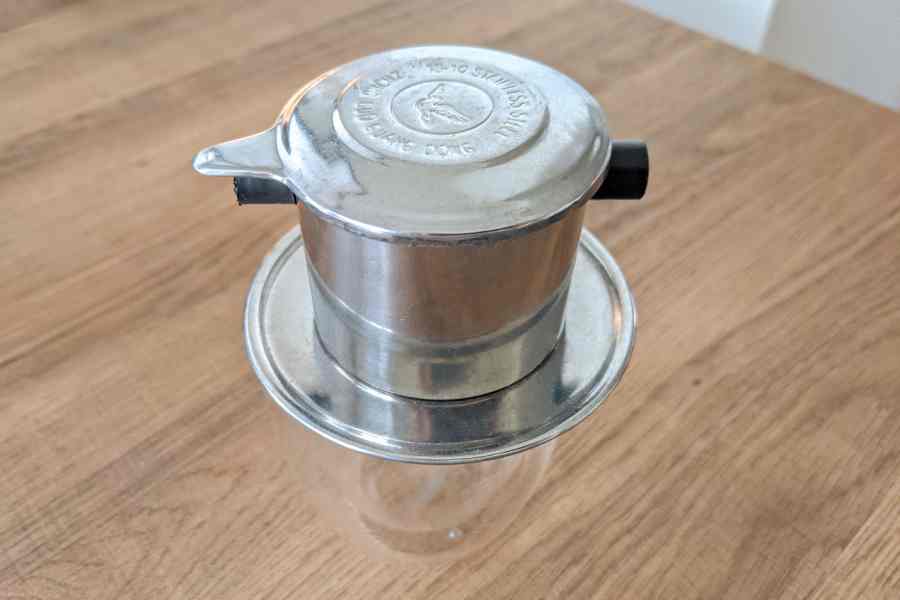
4. Dark Roast
Traditionally, Vietnamese coffee is made using dark roast. But instead of using higher temperature, Vietnamese coffee is roasted using longer roasting time.
The process helps get a consistent roast, prevents any sugar and oils breakdown or oxidation. It doesn’t affect the caffeine content, and it gives the coffee its signature dark color and bold flavor.
5. Local Palate
Vietnamese cuisine is flavorful and vibrant, including liberal use of fish sauce, garlic, and fresh herbs. The local palate is used to punchy flavor profiles.
For the locals, coffee is part of their morning ritual, a potent pick-me-up before work. You’ll never see them sipping it on the go, but sitting down and enjoying it slowly.nt per cup.
How Much Caffeine is in Vietnamese Coffee?
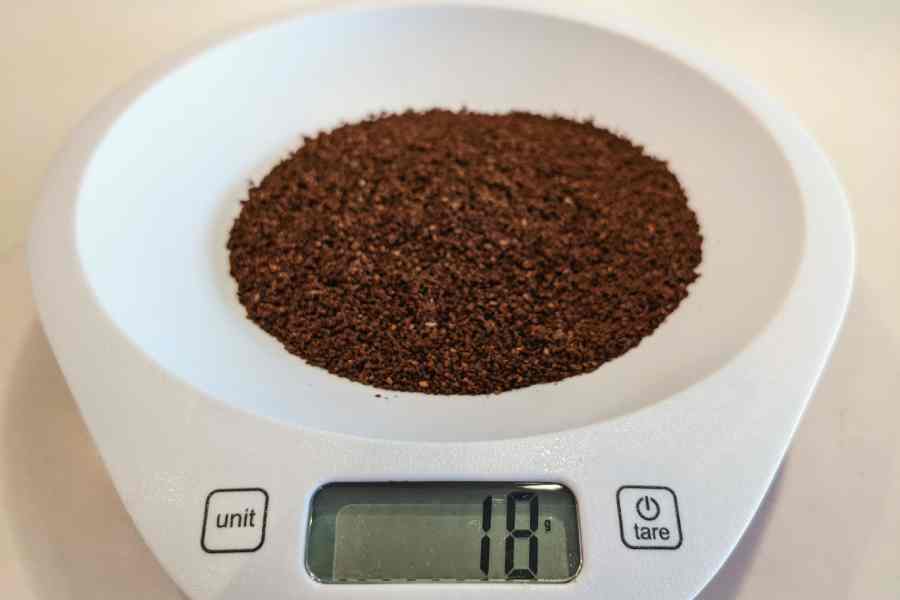
We mentioned that Robusta has a higher caffeine content than Arabica; let’s see how that measures in a cup. A 6 oz cup of Robusta has 200 mg of caffeine, while the same cup of Arabica has 130 mg. The FDA’s recommended daily caffeine intake is 400 mg(3), which means no more than two cups of Vietnamese coffee per day.
Of course, Vietnamese coffee can be made with Arabica beans nowadays. If you’re concerned about your caffeine intake you can always politely ask the barista the type of beans they are using.
Too Strong? Start with these Coffees Instead
Vietnamese coffee can shock your system, especially if you’re used to milder coffees with milk or cream. If you’re still eager to engage in the hype, try to build up your tolerance with these versions of Vietnamese coffee.
Iced Coffee (Cà Phê Sữa Đá)

Cà Phê Sữa Đá is the Vietnamese iced coffee. It’s made with coffee, water, and a little bit of condensed milk.
If you want to make it yourself, get your hands on a phin and some Vietnamese coffee.
Place a heaping tablespoon of coffee in the phin and cover with a cup of boiling water. Let it drip for about 3 to 5 minutes. Remove the filter, add 2-3 teaspoons of condensed milk and pour it in a glass filled with ice.
Yogurt Coffee (Sữa Chua Cà Phê)

Here’s a combo you’ve never heard of – yogurt and coffee. Sữa Chua Cà Phê is made with plain yogurt, condensed milk, crushed ice, and Vietnamese coffee.
First, brew Vietnamese coffee traditionally using a phin. Combine the yogurt and milk in a bowl, transfer the mix to the glass, and pour over the brewed coffee. Top with ice and enjoy!
Egg Coffee (Cà Phê Trứng)

Egg coffee is an old Hanoi tradition and a real treat to all the senses. Whipped egg yolks and condensed milk is combined with coffee to make this delicious beverage.
Think of it as a Vietnamese egg nog.
To make it yourself, start by brewing 12 oz of Vietnamese coffee. Next, combine one egg yolk and 4 tablespoons of condensed milk in a bowl and whip them with a mixer or blender. Stop when small peaks start to form, and the consistency is frothy. Pour the coffee into cups, and add the egg mixture on top.
Summary
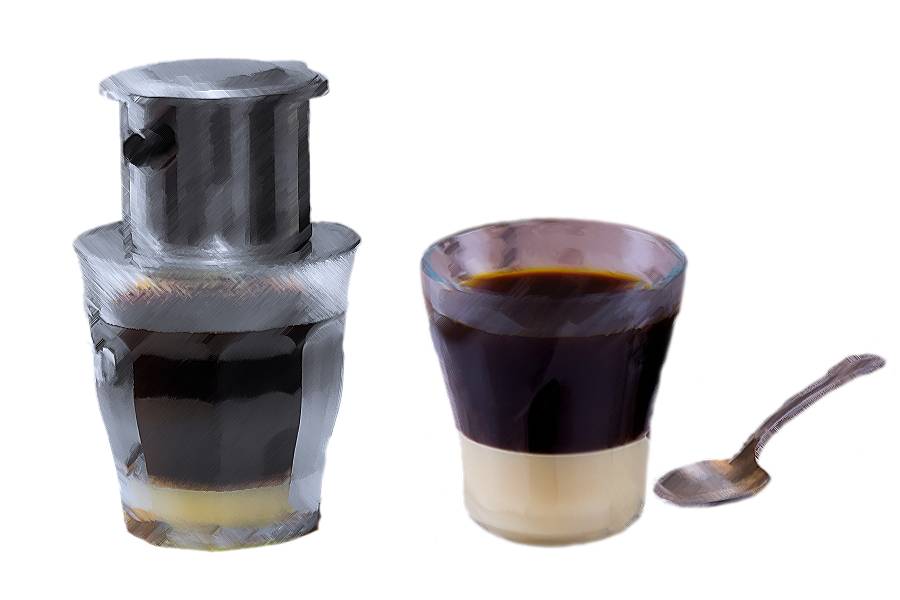
Avid coffee lovers are well acquainted with the strength and the worldwide importance of Vietnamese coffee. Don’t overlook this coffee because you’ve heard stories about people passing out after a sip. Try the bold, rich taste, get a hefty dose of antioxidants and witness the unique brewing method.
Is Vietnamese coffee strong? Absolutely, but you can easily indulge in some of the variations.
More Questions
What makes Vietnamese coffee so strong?
The main factors that make Vietnamese coffee so strong are the caffeine-rich Robusta beans, the phin, which ensures prolonged brewing time, and the fine grind, which allows a larger contact surface. The location is also a factor – Vietnamese coffee suits the palate of the locals, which are accustomed to intense and strong flavors.
Is Vietnamese coffee stronger than espresso?
Vietnamese coffee is stronger than espresso—the reason behind this lies primarily in the type of beans. Most espressos use Arabica, while Vietnamese coffee uses Robusta. Compared pound for pound, Robusta contains almost double the caffeine. For example, a 6 oz cup of Arabica served black provides you 130 mg of caffeine, while 6 oz of Vietnamese coffee made of Robusta has 200 mg.
Why is Vietnamese coffee bitter?
Vietnamese coffee has a more striking bitterness due to the combination of dark roast and Robusta beans. Robusta is known for its earthy, bitter, and harsh taste, which is why espresso producers often overlook it. It misses the caramelized, light, and fruity taste of Arabica. The dark roast provides a hint of chocolatey taste but not enough to cover the bitterness.
Wondering where your info comes from? We totally understand. Hey Joe only obtains our information from reputable sources. Contents from this article are sourced from the following publications:
- Culture Trip.: https://theculturetrip.com/asia/vietnam/articles/enjoy-coffee-the-vietnamese-way/
- Perfect Daily Grind: https://perfectdailygrind.com/2021/02/exploring-vietnamese-coffee/
- Mayo Clinic: https://www.mayoclinic.org/healthy-lifestyle/nutrition-and-healthy-eating/in-depth/caffeine/art-20045678

